Amphibian Voice Summer 2002 Vol. 12 No.2 pages 4 & 5
- Newsletter of the Adopt-A-Pond Wetland Conservation Programme
- Toronto Zoo The article by: Bentley Christie & The Vernalis Project
Call'um of the Wild
Discovery at Cawthra Bush
By: Donald Barber
The arrival of spring breathes new
life into the forests and wetlands of Ontario. It is the time of
year that grassroots stewards and naturalists dream of exciting new discoveries
to be made in the natural world. This year in the Cawthra Bush Mississauga,
dreams came true. Naturalists, armed only with flashlights
and cameras discovered large populations of Fairy Shrimp in a series of
vernal [ephemeral] ponds and an ephemeral stream! (Fairy Shrimp are
pictured below.)
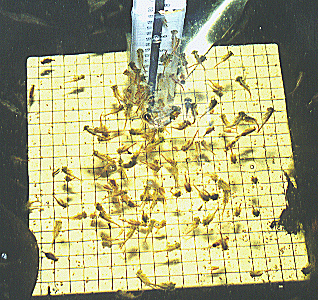
Ephemeral or vernal ponds form in landscape depressions by spring run off and/or high water tables. They dry up in mid to late summer, and therefore cannot support fish populations, creating ideal habitat for a variety of salamanders, frogs and toads to lay their eggs.
What got us all fired up about Cawthra's vernal ponds was Bentley Christie, an honours biology (aquatic environments) graduate. Mr. Christie is working on a vernal pond study and he happened upon our website while researching Fairy Shrimp. In the past we had only found two individual Fairy Shrimp, but Mr. Christie's guided tour was the catalyst for this year's exciting discovery of large populations of Fairy Shrimp in the vernal ponds of Cawthra Bush. Mr. Christie referred to the Cawthra vernal pool complex as a "remarkable find" and "thus far I haven't seen anything remotely like this in such an extensively urban environment."
The Friends of Cawthra Bush (FCB)
along with Mr. Christie discovered the advantages of searching at night
for Fairy Shrimp, as they seemed to be attracted to flashlight beams.
By attaching a flashlight to a tripod (photograph below) so that the light
shines on a submerged square piece of plastic with a grid, a person can
return to the same spot in a pond, repeatedly and document the number of
Fairy Shrimp and size on any given night. Not only are they easier
to see but population counts are easier to make using this method.
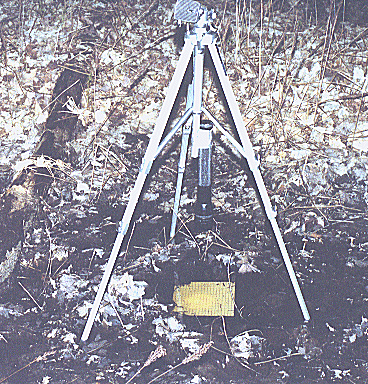
Fairy shrimp are one of several fascinating species in the Cawthra Bush. One of these species, the Jefferson salamander, has its last refuge there. This threatened species uses ephemeral ponds to breed. They swim gracefully through the pond, diving down to the bottom then gliding back to the surface to gulp some air.
The photograph (below) was taken
of a Jefferson Salamander engaged in this ballet on a nighttime search.
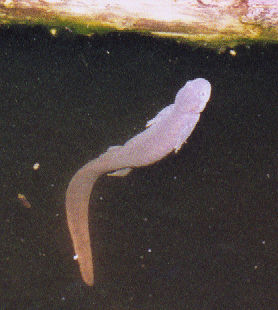
Another species that was discovered in Cawthra Bush this year was the Chimney Building Crayfish. This species, unlike other species of crayfish, can move about on dry land! They get their name from the chimney like tunnels they dig to reach the water table. This enables them to live in areas that appear to be bone dry for months at a time.
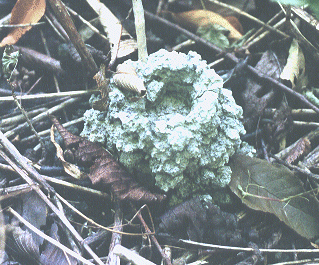
The Cawthra Bush is an old growth ecosystem that survives as a fragment of the original environment, and is large enough to have two forest interiors. FCB has worked hard to have the Cawthra Bush recognised as more than a stand of trees. Cawthra Bush now boasts a complex of Provincially Significant Wetlands. The FCB found and continues to document many of Cawthra's wetland species and features.
FCB continues to find out fascinating information about the vernal ponds of Cawthra Bush and the work is on-going. Frog Monitoring is currently underway for the first year at the Cawthra Bush. Water flow measurements, rain fall data, and pond depth information are forwarded to the Ministry of Natural Resources and added to the Cawthra Bush wetlands file.
Cawthra Bush has attracted many experts
who have identified other fascinating species there like Dead Man's Fingers
(fungi) and Pileated woodpeckers. Cawthra Bush became recognised
as provincially significant because our local community rallied together
and made some unique discoveries!
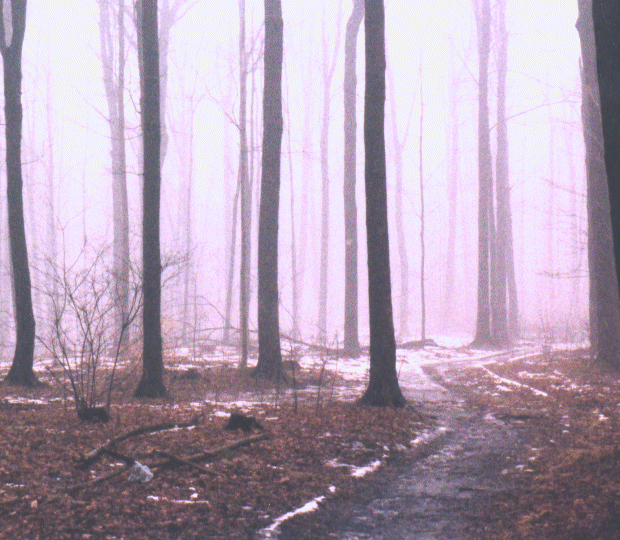
Editor's Note
Don Barber is the president of Friends
of Cawthra Bush. He continues to explore the natural secrets of this
important area with other members of the community.
For more information on the amazing species in this article check out the web sites listed below.
* Friends of the Cawthra Bush (FCB) site: http://Cawthra-Bush.org/
* Fairy Shrimp: http://www.vernalpool.org/inf_fs.htm
* Jefferson Salamanders: http://www.vernalpool.org/inf_mol.htm
Home Page - Main Table of Contents - Back up a page - Back to Top
[COMMENTS BY DON B. -
A closer look at Fairy Shrimp
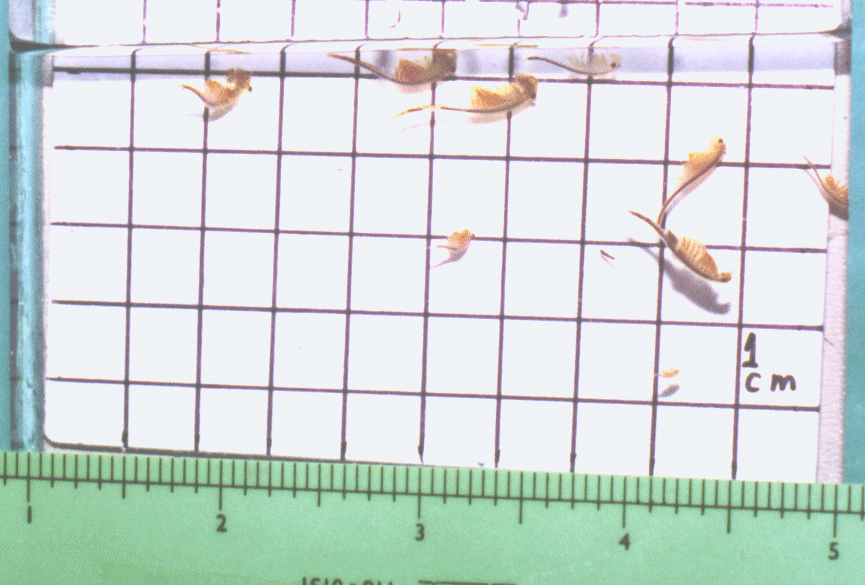
]